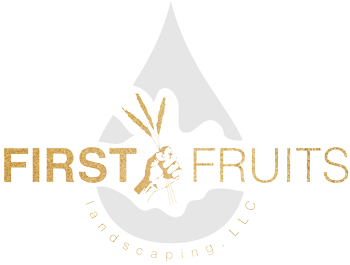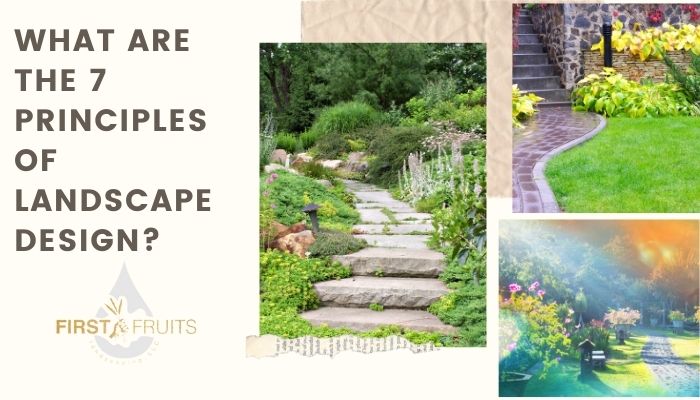Landscape design. We’ve all heard of it, we get the general idea of it, and we know that has something to do with designing your home’s landscaping. But did you know that there really is a unique method to landscape design? From water and hardscape, man-made items and plants, designing the perfect landscape for your home and property do take some planning. Here are the seven principles of landscape design.
#1. Unity.
You want the landscape to look cohesive; as if every plant, rock, and feature is supposed to float together. You wanted to attract and hold attention and it starts with the storyline development and final goal of what you are trying to achieve. Unity develops from a storyline; are you going with the Japanese design, elegant English garden, minimalistic, or more all over the board with wildflowers? Having a plan ahead of time and creating unity with your landscape will make the entire area much more cohesive and attractive.
#2. Lines.
Lines are a powerful design element that can define rooms and connect people to the landscape. Use sweeping bold lines and curves rather than zigzags and small wavy curves. Let your eye flow from one section to another to delineate soft skate and hardscape areas creating special rooms and sections within your landscaping. Lines can be formed by ponds, walkways, flower gardens and borders.
#3. Form.
Form is determined by the line, direction, and arrangement of trees, branches, and shrubs. You want to repeat the topography with cohesive plants and trees. This might be horizontal and spreading forms such as groundcover, rounded forms with bushes and shrubs, the shaped or vase-shaped trees creating a comfortable space beneath the canopy, weeping forms that lead the eye back to the ground, or pyramid forms that direct the eye upwards but use these sparingly.
#4. Texture.
Texture can be defined by coarse or fine, heavy or light, thin or dense, and light or shade. Texture changes with the distance so what you see up close may be different than what you see at a distance. Seasonal gardening is all about texture. You want to know what texture and colors are going to have during different seasons and make sure you have enough plants that can carry you through the seasons.
#5. Color.
A lot of people simply stop at color. Color gives great appeal and evokes a response. Colors can definitely create emotions such as red passion encourage, yellow joy and happiness, blue imagination and calm, green harmony and nature, orange interaction and fun, purple intuition and respect, white purity and innocence, and pink love, tenderness, and sweetness. Also, warm and cool colors can create different landscapes and storylines as well. For instance, cool colors can be less conspicuous, can be restful, suggest distance and work better on a low scale. Warm colors are very conspicuous, cheerful, and stimulating.
Landscape Design Ideas for Different Types of Homes and Yards
#6. Scale.
Scale can evoke an emotional connection and is related to color as well. The scale relates to the comparative value of the landscape element to a fixed structure like a house, barn, or trail. Relative scale refers to comparative sizes of objects in the landscape and can be closely linked to color. This might mean one large tree with smaller plants around it, vases, and container gardens.
Hi scale and low scale also make a difference. High scale promotes action and is used around larger buildings and larger spaces where low scale is more relaxing and calming used in-home landscapes to create peace and relaxation.
#7. Balance.
Balance doesn’t necessarily mean symmetrical. Formal balance will be symmetrical meeting the same on both sides giving stability and dignity where informal balance differs from left to right but still creates a balance such as a tall tree or two on one side with a lot of smaller bushes on the other.
Other principles not necessarily as important as the seven include the sequence or change in flow and form, dominance and subordination of certain elements within the landscape and simplicity as well as variety. You’re not creating a horticultural zoo but you do want to fill the space with proper plantings that work for the color, season, location, and major buildings on the property.
Ready to get started with the new landscape design? Contact me at any time for a quote. I look forward to seeing how amazing your landscape design will come out. Need a landscape renovation? Start here:
Additional Garden and Landscape Additions Tips:
- 10 Genius Landscaping Tricks
- The Difference Between Urban Design and Landscape Architecture
- 10 Great Ways to Improve Your Backyard
- Tools and organizing for your shed
- 3 Steps to Lawn Renovation
- How to Care for Pampas Grass
- 5 Easy Landscaping Tips for Rental Properties
- 7 Tips to Beautify Your Winter Landscape
- Is Landscape Staging a Thing?
- 10 Questions to Ask When Hiring a Landscaper
- How to Convert a Garage into a Room

